Ah, moar. With the global economy now clearly stuffed as Chinese stimulus has gained near-zero traction so far, markets have really begun to party again. Not even good US data could disrupt the happiness today as moar Chinese stimulus with the prospect of moar also from the ECB and BOJ sent markets into ecstatic melt-up. Everything Mining GFC was bought heavily. The US dollar rose firmly:
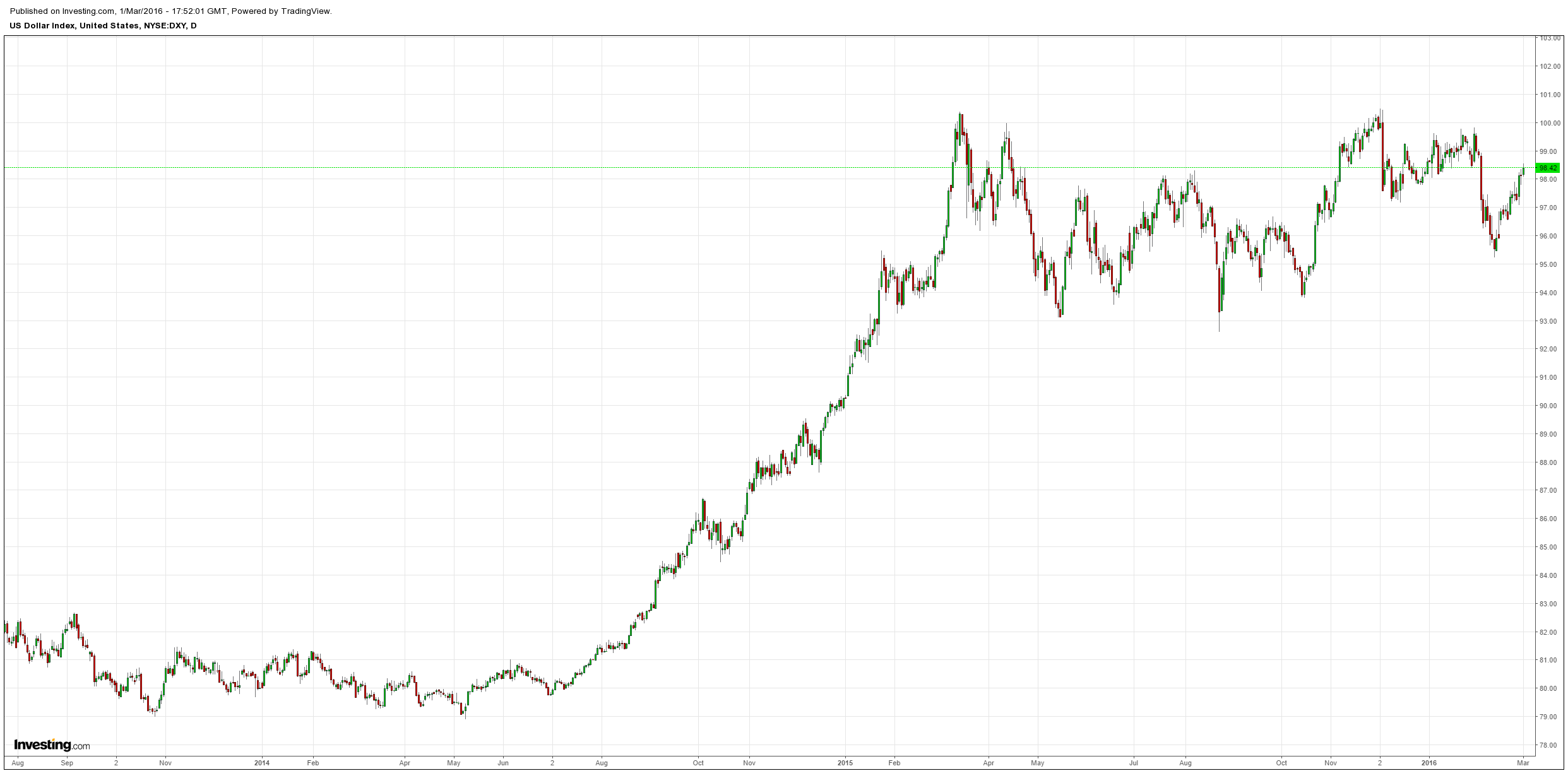
But not as much as commodity currencies:
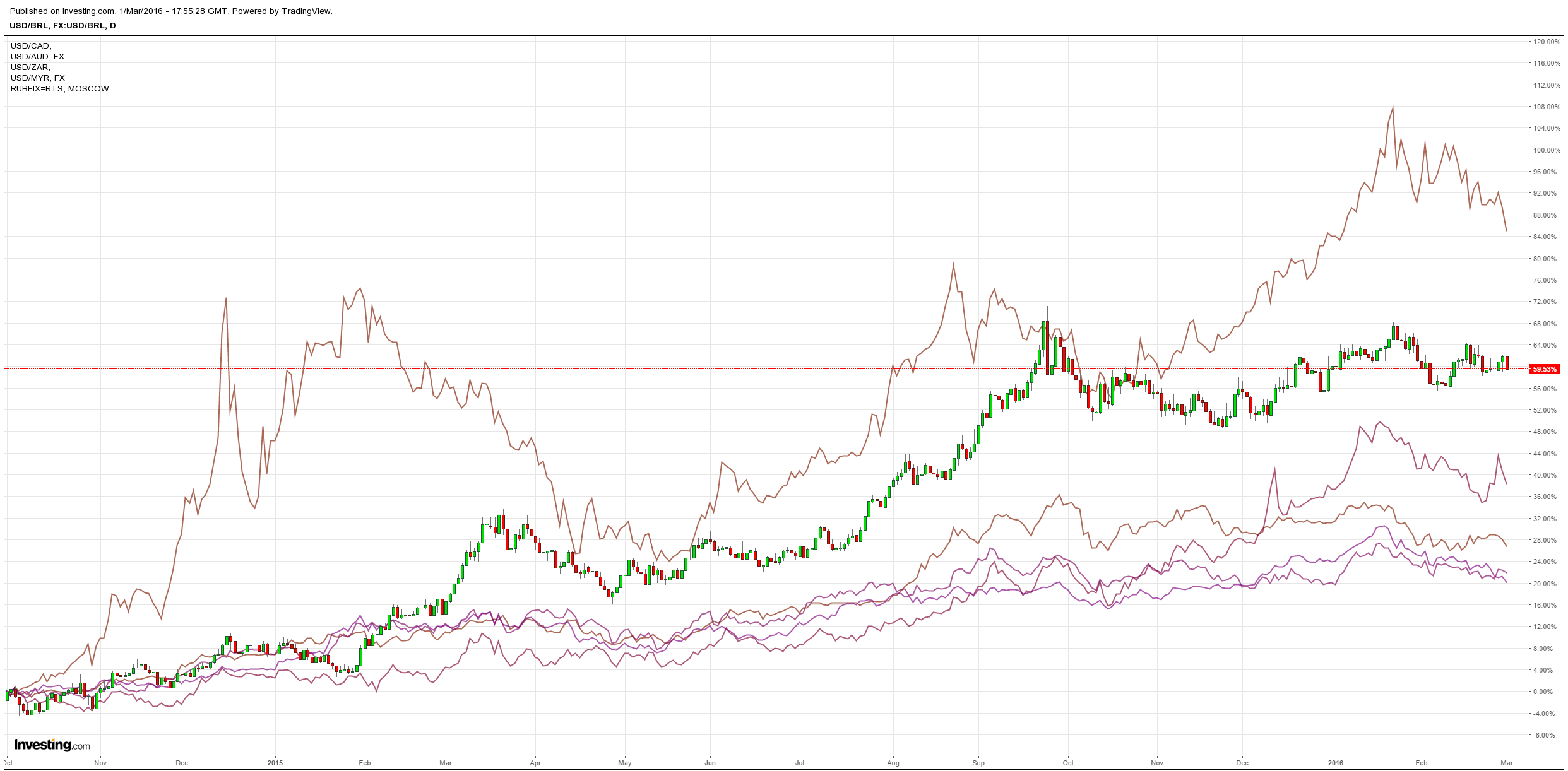
Oil confirmed its break out:
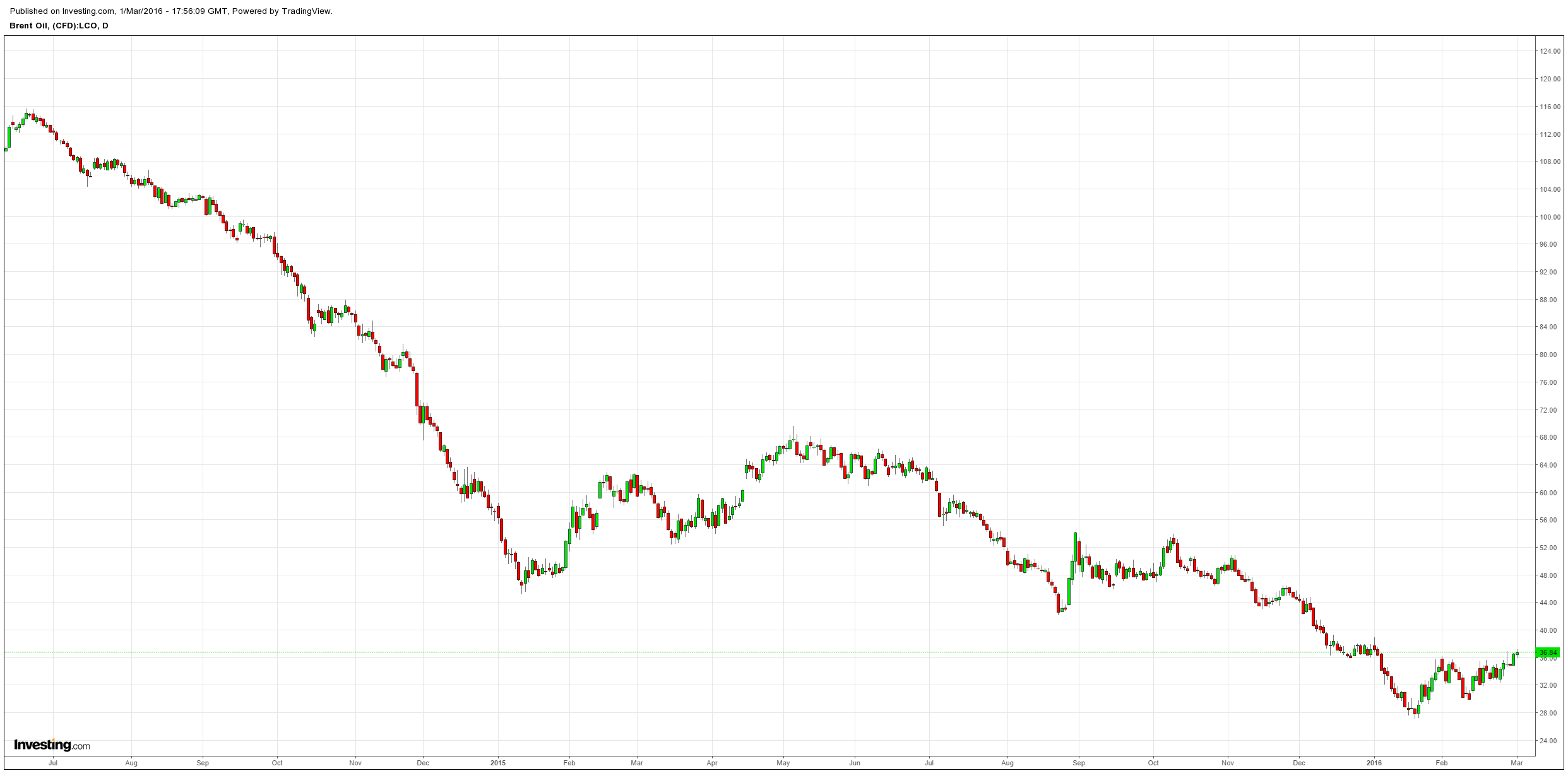
And base metals surged. Copper even has an inverted head and shoulders bottom in place:
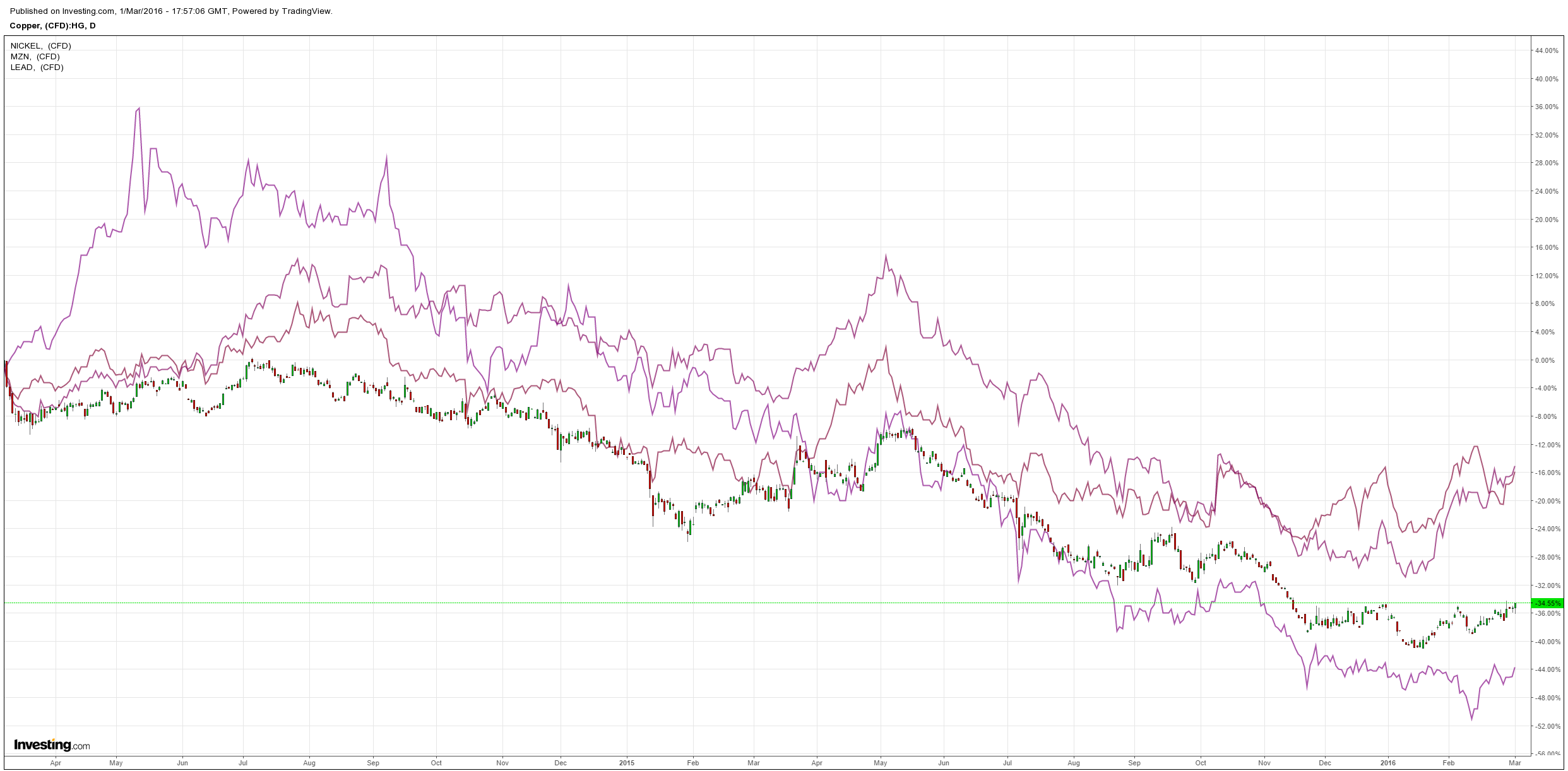
Miners mostly rose:
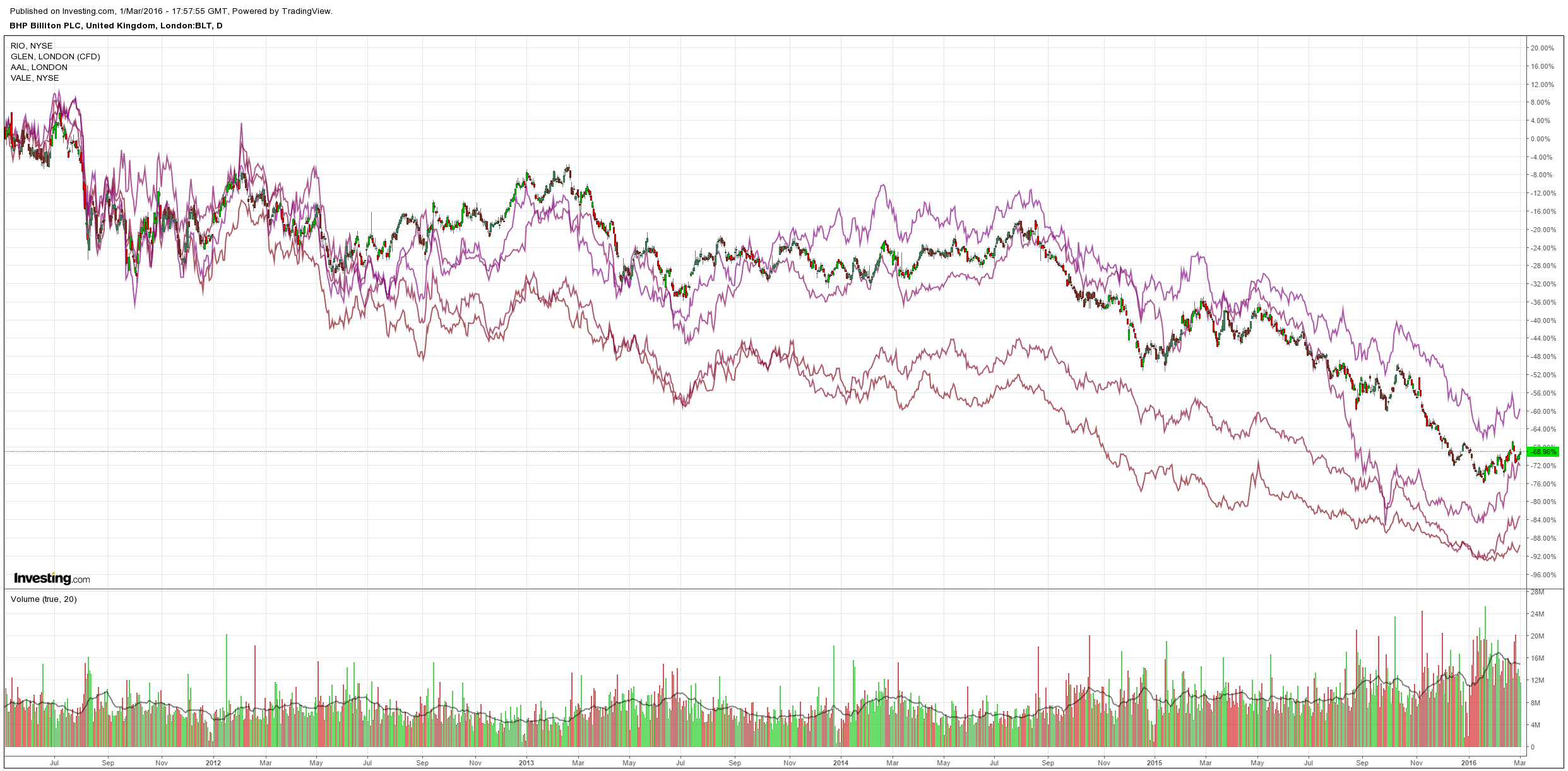
And US/EM high yield was bought again:
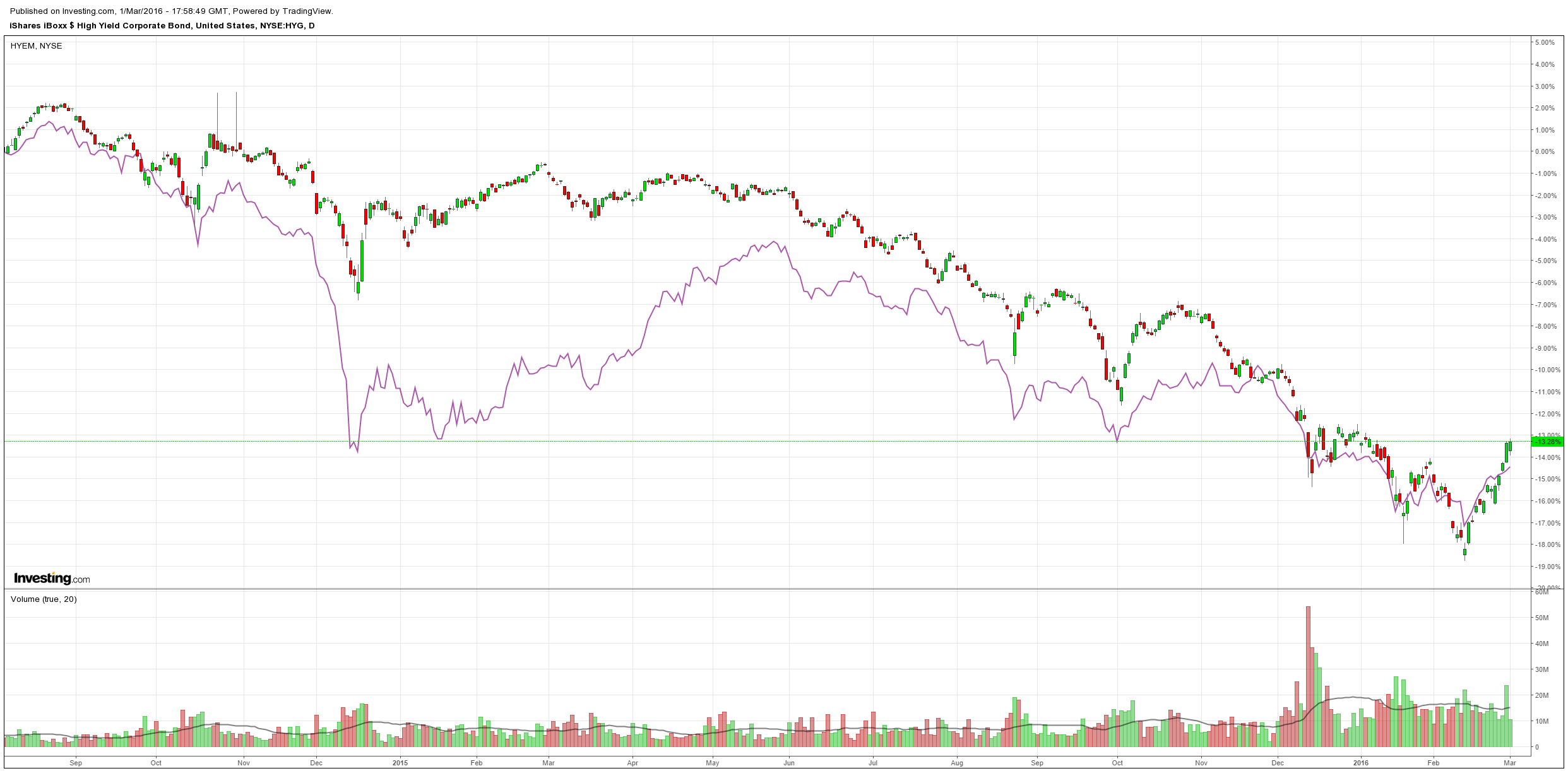
Nothing could stop stocks as they partied!
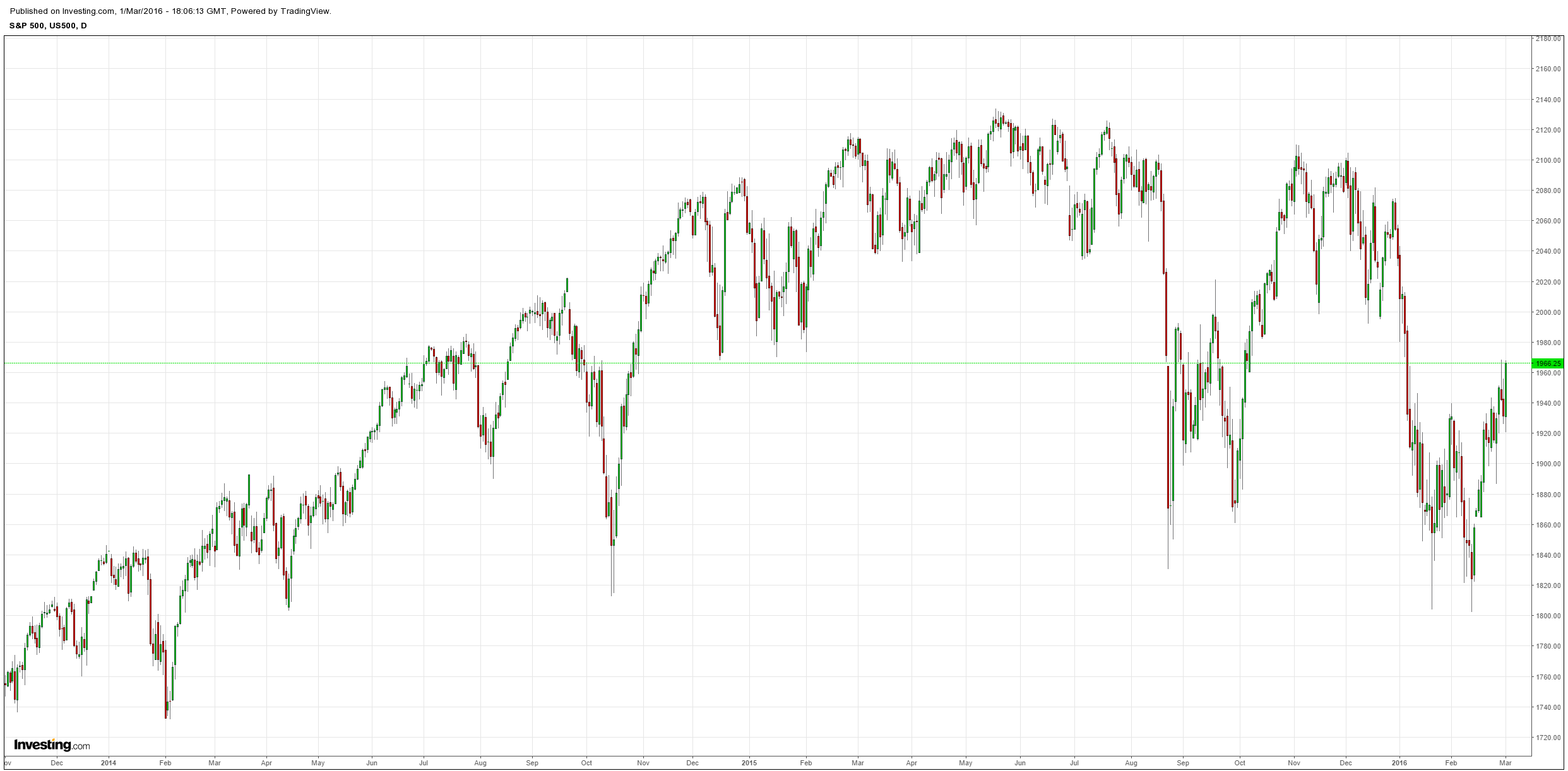
And US bonds copped a pasting as the ISM came in better than expected:
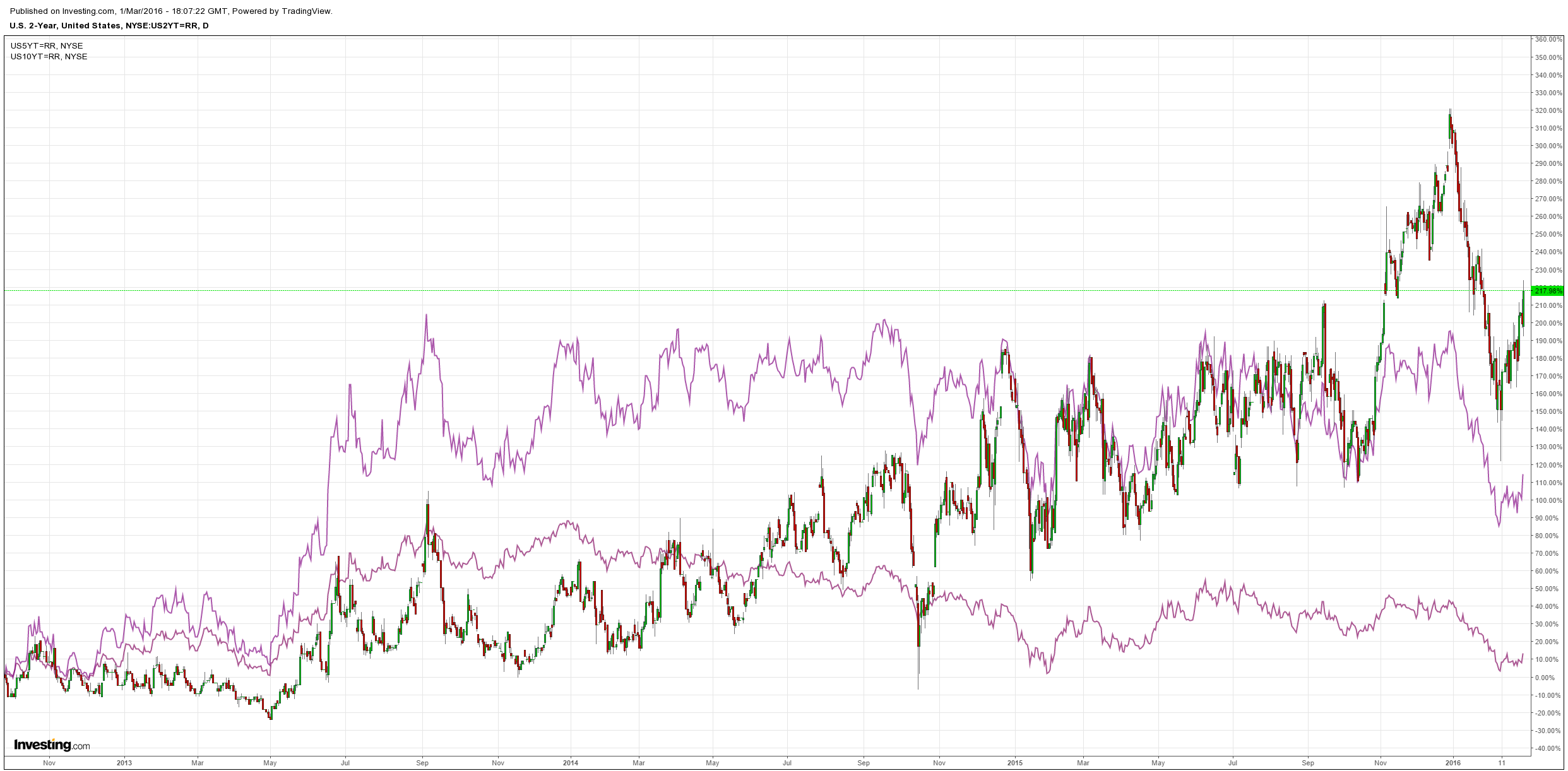
Of course a strong US dollar is one half of the Mining GFC problem but that’s not worrying anyone today. The other driver is a weak China and falling yuan but that’s not a problem today, either, despite moar PBOC easing, from Societe General:
A 50bp RRR cut could free up close to RMB700bn in liquidity, which would offset the liquidity impact of roughly $100bn in declines in official FX reserves. The FX reserves fell by $100bn in both December and January. Instead of timely RRR cuts, the PBoC was diligently conducting large-scale liquidity injections via open market operations and standing facilities. The PBoC admitted in January that RRR cuts were not preferred then because they could add to depreciation pressure on the RMB. So the subtext of today’s cut is, first and foremost, that the PBoC is less worried about the currency and capital outflows now than just a month ago.
The currency stabilisation is attributable mostly to two factors. First, Chinese policymakers did a good job over the past month at communicating their intention to the market, including the two talks from PBoC Governor Zhou within one month’s time and a whole line-up of senior policymakers’ repeated promises of “no currency war” at G20. More importantly, the halt in the euro and yen depreciation made it possible for the RMB to remain largely stable relative to the basket of currencies (the CFETS index ranging between 99 and 101) without weakening too much against the dollar.
We need to watch the development with interbank and bond markets in the coming weeks to gauge the actual impact of this RRR cut, especially whether the PBoC will also lower the interest rates on its various liquidity injection tools.
Regardless, bank lending and corporate bond issuance have picked up significantly since H2 2015. Following the outsized increases in January, we expect to see another big increase in new credit in February. Some suggest that this is a sign of policy stance shifting towards much more aggressive easing, but the PBoC’s comments sounded rather ambivalent. On the one hand, it viewed rapid loan growth as partly seasonal and partly necessary for supporting economic growth, but on the other, it pledged to monitor credit risk closely and to respond with differentiated RRR adjustments…
To us, even if credit growth has got a (reluctant) blessing from policymakers now, it could quickly turn into a curse at some point.
Moar Chinese credit will not fix the Mining GFC. It is driven by the supply side property excesses of the past cycle. Nor can China sustain a stable yuan for very long without moar capital controls which will also slow growth.
Nothing has changed but for now markets want to believe.

